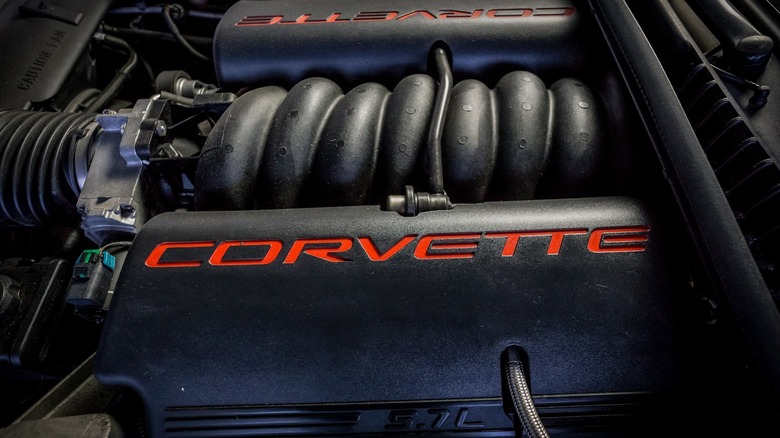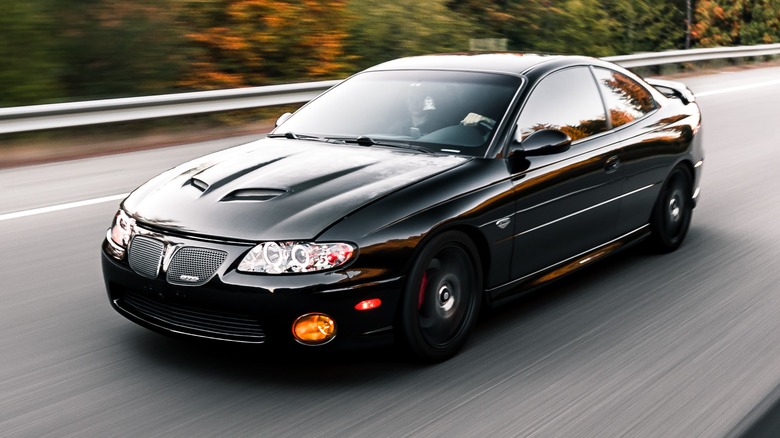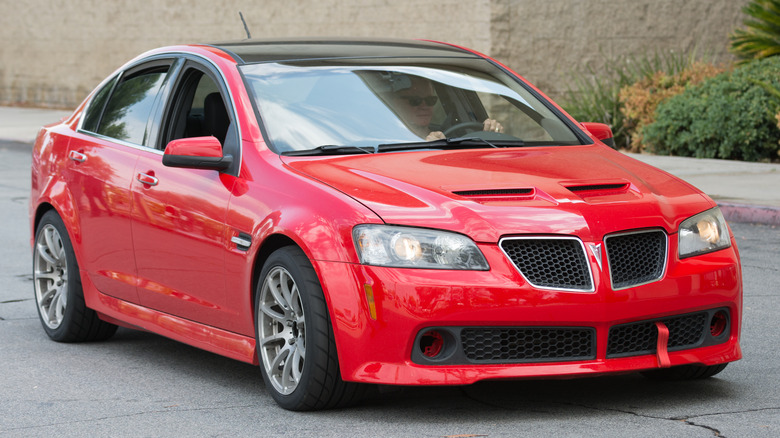Which Pontiacs Were Powered By A Corvette Engine?
There was a time, back in the day, when a Pontiac could have never been powered by a great Corvette engine. This was because the various divisions of General Motors were able to independently develop their own unique V8 engines and had no need to look to other GM divisions. During their heydays, Chevrolet, Buick, Cadillac, Oldsmobile, and Pontiac all had their own branded families of both small-block and big-block V8 engines. It was a great marketing tool during the muscle-car craze, when a Pontiac engine always powered the performance of every GTO. But it also was an expensive practice that boomeranged on GM in the late 1970s, when undisclosed V8 engine swapping between the divisions resulted in a scandal.
This also coincided with the slide in GM's market share, combined with the corporation's need for a less-expensive supply of emissions-compliant engines. The result was a transition to "corporate" engines, most of which were provided by Chevrolet, thanks to Chevy's large production volume. By the late 1990s, all GM divisions except for Chevrolet and Cadillac had stopped producing V8 engines.
As the sole producer of high-performance V8 engines for its own Corvette brand, Chevrolet became the go-to brand for other GM divisions that needed engines for their range-topping performance cars. It was perfectly logical for Pontiac, during its latter years, to drop a Corvette engine into several of its fastest, highest-performing vehicles. Here are the Pontiacs that were powered by a Corvette engine.
1998-2002 Pontiac Firebird Formula
The 1998-2002 Pontiac Firebird Formula had previously stood in the shadow of its big brother, the Trans Am. Less flashy and lighter than the Trans Am, but with the option of Trans Am-level horsepower upgrades, the Formula was an understated choice for those who wanted to take a stealthy approach on the street.
The Firebird Formula went out on a high note thanks to some upgrades in 1998, when, along with new sheet metal, it also received the same standard engine as the Trans Am — the Gen III 5.7-liter all-aluminum LS1 with 305 horsepower. A WS6 Ram Air upgrade sent cold air directly from the nostrils in the special hood into the engine, boosting output to 320 horsepower. Transmission choices included a six-speed manual or four-speed automatic.
The Formula lost the Ram Air option after the 2000 model year, once again becoming the little brother to the Trans Am. The good news was that the base LS1 was upgraded in 2001, courtesy of the Corvette ZO6's LS6 block. The ZO6 contributed its intake manifold, lack of exhaust gas recirculation, higher-volume fuel injectors, exhaust manifolds, more-durable crankshaft main bearings, plus a recalibrated powertrain control module. The result was a five-horsepower increase to 310.
Then came 2002, the final year of Firebird production. Pontiac's ponycar would finally sail off into the sunset, followed a few years later by the entire brand due to the 2009 GM bankruptcy.
1998-2002 Pontiac Firebird Trans Am
The 1998-2002 Pontiac Firebird Trans Am also received Corvette's 5.7-liter LS1 engine. Since its 1969 debut as top dog in the Firebird lineup, Trans Am had had the most horsepower and the highest performance as standard equipment. This ended briefly in 1998, when both the Trans Am and the Firebird Formula received both the 305-horsepower LS1 and the 320-horsepower WS6 Ram Air upgrade engines. But the balance of power changed for 2001, when the Formula lost the Ram Air option, making the Pontiac Trans Am the most powerful Firebird once again.
In 2001, Trans Am received some LS6-derived engine upgrades developed for the C5 Corvette ZO6, boosting the LS1 base engine to 310 horsepower and the Ram Air to 325 horses. A small but significant percentage (10%-25%) of LS1-powered Firebirds were built with the stronger LS6 blocks in 2001 and 2002, thanks to an overstock situation.
Even higher performance was available (for a $3,999 upcharge) with the track-focused 1999-2002 SLP Firehawk package, previously available only on the Firebird Formula. Trans Am Firehawk owners could exploit an LS1-based 327-horsepower engine (increased to 335 in 2001), enabled with forced-air-induction composite hood and low-restriction stainless steel exhaust, Bilstein shocks, and Eibach springs.
The party came to an end with the 2002 model year, the final one for the Trans Am and all Firebirds. Trans Am performance had peaked with a WS6 doing zero to 60 in five seconds with a quarter-mile time of 13.5 seconds at 107.4 mph!
2004-06 Pontiac GTO
The 2004-06 Pontiac GTO was a seemingly obvious way to leverage GM's global parts bin to bring some excitement back to the Pontiac brand, two years after the Firebird's demise. This fifth- and also last-generation GTO was the brainchild of Bob Lutz, former GM executive who had returned to the corporation in 2001. The new GTO was based on Monaro coupe of GM's Australian Holden brand and arrived in the states with the Corvette's LS1 5.7-liter, 350-hp engine, which was upgraded in 2005 to the new Corvette C6's LS2 6.0-liter engine with 400 horsepower.
Unfortunately, the new Pontiac GTO never caught on with U.S. enthusiasts. While it had all the performance that might be expected from a modern-day GTO, as well as an excellent interior, it simply didn't look like a GTO. It was much too conservative a design, with none of the in-your-face impact a GTO was expected to have. The addition of hood scoops for 2005 did not move the needle. Even the Monaro's designer thought that the car had been miscast as a GTO and would have done much better as a Chevrolet.
Competitively speaking, the newly arrived S197 2005 Mustang GT was a much more appealing package overall and also undercut the GTO on price. After slightly more than 40,000 fifth-gen GTOs were produced over the three model years, there would be no more.
2008-09 Pontiac G8 GT/GXP
The 2008-09 Pontiac G8 GT and G8 GXP were the top two trim levels of the Pontiac G8 sedan, which was another Australian import sourced from GM's Holden for import to the U.S. While the base G8 had a 3.6-liter, 256-horsepower V6 engine, the GT and GXP both had Corvette V8 engines under their hoods.
The G8 GT model came with the Corvette C6's LS2 engine that had previously found a home in the 2005-2006 Pontiac GTO. Rated at 361 horsepower, the GT's engine was mated to a six-speed automatic.
The star of the lineup was the G8 GXP, with its 6.2-liter, 415-horsepower LS3 V8 that was introduced in the 2008 Corvette. It could be equipped with either a six-speed manual or a six-speed automatic. Only 1,829 GXPs were produced, making them the rarest of all G8 sedans.
The Pontiac G8 GXP had an undeservedly short run for one simple reason — the 2009 GM bankruptcy put an abrupt end to Pontiac. In January 2009, the final G8 was produced, while Pontiac's remaining vehicles (limited to the Pontiac Vibe and some fleet-only G6 sedans) were made for one more year as 2010 models. The final Pontiac, a G6 sedan, came off the line in January 2010. And that's all, folks!




